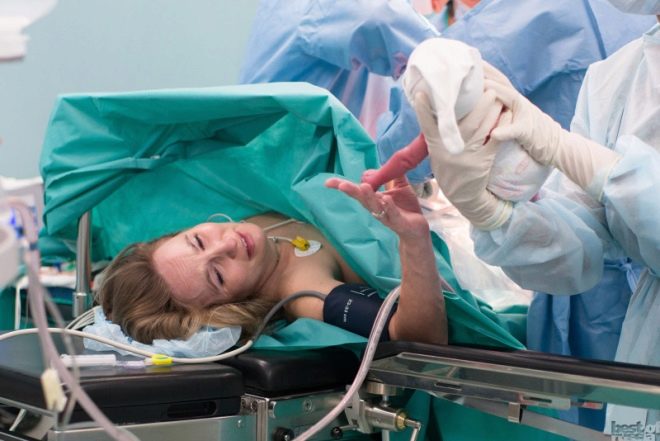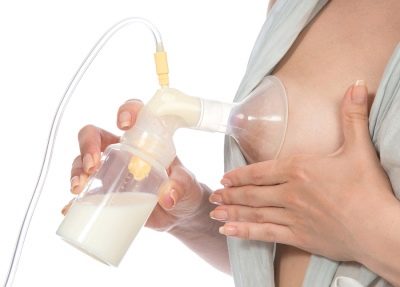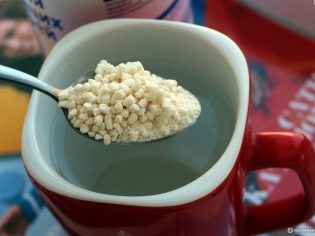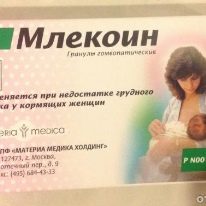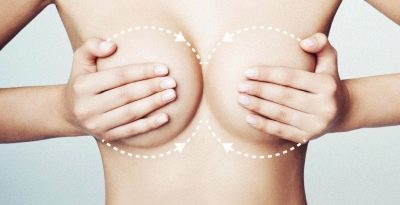When does milk come after cesarean section and how should lactation be adjusted?
The question of whether the baby will have enough breastmilk after a cesarean section concerns all women in labor who are going to have a planned operation. Excitement is promoted by the widespread view that milk after surgery comes much later, it is not enough, the lactation process itself is associated with big problems. Is this true, we will tell in this article.
Lactation after surgery
Breastmilk is food from all points of view, ideal for the baby. The composition of this product has no analogues, so a full replacement for human milk does not exist. There is nothing surprising in the fact that every loving mother would like to give her child as much as possible useful and necessary for growth and development. Therefore, the issue of lactation after delivery and after cesarean section is most acute.
After physiological birth, when the baby is born according to all the laws of nature, the hormonal background of the woman fully corresponds to the new need of the crumbs, the milk comes much faster than after the operation. A cesarean section is attempted before the birth begins, which means that the mammary glands of the woman are not yet ready to feed the baby. But the closer to the date of birth will be assigned to the operation, the less problems will be with lactation.
Operational childbirth disrupts the natural endocrine chain, in which the mammary glands first mature for almost nine full months, and then oxytocin and prolactin are produced, which stimulate milk production. First, colostrum is released, many still have even before delivery, and only a few days after the appearance of the baby, the colostrum turns first into a transitional form of milk, and then into full-fledged breast milk.
On average, milk appears on the third day after birth. But in the case of operative delivery, various options are possible. One woman will have milk on the second day, and the other - only on the fifth. Despair is not worth it. Lactation can be adjusted even in the most difficult cases when the cesarean was held for urgent medical reasons long before the expected date of birth.
Milk will definitely come if the woman is firmly set to breastfeed and will do everything possible for that.
What affects the timing?
In itself, surgical intervention can not be considered natural, and this fact is reflected. Drugs that are administered to a woman for anesthesia surgery for anesthesia, somewhat inhibit the production of the necessary hormones and prolactin in the early postoperative period, which is why lactation after surgery is established later.
Affects the arrival of milk and timely attachment of the baby to the breast. Refractory skills are correctly formed in the baby, the nipple is stimulated in the woman, which enhances the production of oxytocin and prolactin. It is believed that the earlier the attachment is carried out, the better. During a cesarean section, this is possible directly in the operating room, if, of course, the operation is performed under spinal or epidural anesthesia and the woman is conscious during all surgical operations and manipulations. If the operation is performed under general anesthesia, attachment to the chest is not possible.
It is important and the number of births.In primiparous women, regardless of the mode of delivery, milk always comes later than those who already have breastfeeding experience and have developed nipples and sufficiently wide gland ducts.
Lactation is affected by the postoperative period. If it is not complicated, then there should be no problems with milk. The psychological state of the puerperal also plays a role The calmer and more positive a woman is, the more likely the appearance of breast milk is. Stress, tears, experiences (including due to the fact that there is little milk) slow down the complex processes of formation of the nutrient fluid.
Do not worry about the fact that the child will remain hungry. Even a few drops of colostrum may well satiate a newborn, because colostrum has a greater nutritional value than milk itself. If it seems to mother that there is no milk, this does not mean that the baby has remained hungry. When the baby sleeps quietly after applying to her chest, you can relax, calm down and come to grips with the implementation of a whole range of measures to stimulate lactation in the postoperative period.
After the operation, the woman will be transferred to the ward within a few hours after the observation in the intensive care unit. After 8 hours, she can get up. From the same moment, if the state of the puerperal does not inspire fear to the doctors, it can theoretically be with the child.
Often attachment of the baby to the breast is a great way to adjust lactation quickly and without damage to the psyche of the mother.
Draining
Straining allows you to speed up the process of milk formation. It is necessary to cuddle, even if there is no milk, because even two drops of colostrum are an excellent result for the puerperal during the first two days after birth. Breastfeed need to breastfeed if there is milk. After each feeding, the gland must be freed from milk residues. Thus, a woman reduces the body's content of a special substance - an inhibitor that prevents the production of milk, if the glands are full. The child’s need for nutritional fluid will continue to grow, and therefore it’s necessary from the first days to ensure that the needs of the child are covered by the mother’s capabilities.
You can do it manually. Correctly expressing colostrum and transitional milk are trained by hands in the maternity hospital. But even if they do not, believe me, it is not at all difficult. A woman needs to rub her breasts with two hands, warm her and start with a slight pressure from top to bottom towards the nipple to carry along all the milk ducts. This will develop the chest in the shortest possible time.
You can use a breast pump. This device can be both manual (pump) and electric. Choose any, starting from your own preferences and the size of the family budget. The principle of operation of all breastpumps is about the same - with the help of a vacuum, pressure is created, the nipple is irritated and the production of prolactin and oxytocin is stimulated, and the milk begins to arrive. Modern electric models do not require much effort to decant, they work themselves, at this time women’s hands can be free for other things.
Milk arrives gradually, not immediately, it is not surprising that on the second day, and sometimes even on the fourth, there will be little valuable nutrient and fluid. It is impossible to cause a sharp and plentiful lactation by any method, and therefore only hard work will help to achieve impressive results.
It is necessary to strain the breast when, after the operation, the woman is prescribed antibiotics. Even if the doctor does not recommend breastfeeding these days because of the possible toxicity of antibiotics to the baby, decanting will help prevent lactation to subside. When the antibiotic treatment is completed, the woman will be able to feed her baby without significant problems.
Teas and medicines
After surgery, a woman is recommended to drink more, but do it with caution so as not to cause puffiness, which is predisposed to in the early period of rehabilitation. And if on the first day only water without gas is allowed, then the very next day it is quite possible to drink special teas that increase lactation. According to the reviews, tea with fennel and the mother’s tea line “Beivita” for mothers who are nursing have worked well.
It is possible to accelerate the arrival of milk using certain medications. Most of the drugs in this group are represented by homeopathic remedies, for example, Mlekoin. But there are quite serious drugs, and therefore it is imperative to consult with your doctor about the possibility of their use immediately after surgery. If the reason for the lack of milk or its lack of hormonal disorders, hormone preparations can be prescribed, in other cases the problem can be dealt with using herbal remedies, for example, Lactogon.
There are also nutrient mixtures for lactating mothers, which not only have a positive effect on the lactation process, but also provide the woman with all the necessary vitamins, trace elements and macronutrients. These products include the Milky Way and Femilak.
Massage
Breast massage should precede each feeding or pumping. First, the process of outflow of the formed milk itself will flow more easily after the massage. Secondly, the massage itself stimulates the mammary glands to produce milk. In addition, a light and short massage will help the processes of the involution of the uterus, since the production of oxytocin occurs, which reduces the female reproductive organ more effectively.
Massage should be carried out within 5 minutes about 4-5 times a day. There are two main tricks. It is necessary to alternately stroke each breast from the top to the nipples, especially on the sides, in the upper chest part. To complete the massage you need to stimulate the nipples. For this, the nipples are gripped with fingers and slightly twisted clockwise and against it.
Additionally, already at home, after discharge from the hospital, you can use a contrast shower for the mammary glands, using alternate warm and cool drenching the chest.
Nutrition
On the first day after surgery, a woman is prohibited. This is due to the need to prevent intestinal filling and constipation. The pressure of the intestinal loops on the uterus with internal sutures can adversely affect the healing of the reproductive organ. Therefore, during the first day only drinking is permissible. On the second day, jelly, broth, white croutons without salt and spices are usually allowed. On the third day, a woman can eat semi-liquid porridges, “smear”, and only on the fourth day after the operation, the puerperal can eat everything that is allowed for nursing mothers.
Dairy products, dairy products, milk cereals, boiled vegetables and mashed potatoes, boiled fish, meat, baked or stewed dishes stimulate lactation well.
It is important to drink plenty of warm. You need to eat fractional, but often - up to 6-7 times a day. No need to starve a nursing mother. Malnutrition, trying to go on a diet, or excessive fears for the possible harm of products for the baby, can lead to a decrease in the production of breast milk.
Reviews
According to women, the main difficulty after cesarean section is related to the fact that the child gets used to sucking milk from a bottle in the first few days. It is much easier to get food from it than from the mother’s undeveloped breast, and therefore after 3-4 days, when the milk arrives, the baby may begin to refuse to feed from the breast, demanding his already familiar nipple.
With this problem, most mothers successfully cope, putting the baby to the breast briefly, before the next bottle-feeding. Gradually, the periods of application become longer, and the amount of formula is reduced. After 1-2 weeks, it is usually possible to transfer the baby completely to breastfeeding.
According to reviews of puerperas, milk after surgery most often appears for 3-4 days.
All measures aimed at increasing lactation should be moderate, since women often describe situations in which the breast pump combined with massage and medicines did not just lactation, but hyper lactation.
Useful tips
In the early days and weeks, simple tips will help you. aimed at improving milk production.
- Be sure to get enough sleep. No matter how troubling a child is, no matter what happens, enlist the help and support of loved ones, friends, relatives and always find time to sleep. Lack of sleep is the most common cause of low or no milk.
- Do not be nervous. All stresses, fears, fears, family scandals, etc. should remain in the past (or go into the future - you will understand later!). Only a favorable psychological background contributes to the establishment of lactation.
If you have questions and problems, do not be shy. Contact your breastfeeding consultant. It will help to understand the individual causes of “failures” and to establish uninterrupted and prolonged breastfeeding.
About breastfeeding after cesarean section, see the following video.


